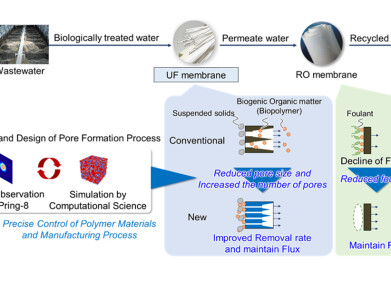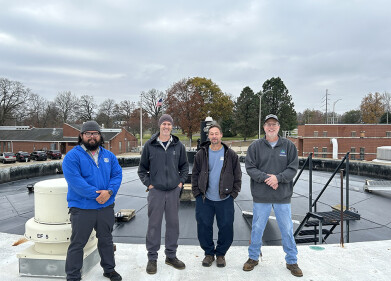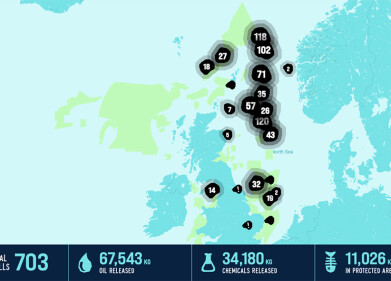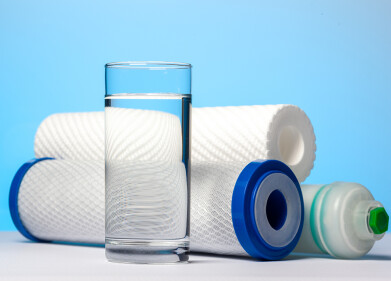-
 Comparison of savings between standalone and integrated ice pigging systems
Comparison of savings between standalone and integrated ice pigging systems
Water/Wastewater
Ice Pigging Technology Offers Dairy Industry Significant Savings
Apr 16 2015
New analysis published today by the Carbon Trust quantifies the benefits of introducing ‘ice pigging’, an innovative way of cleaning pipework using ice slurries, into commercial dairies to improve profitability and reduce environmental impact. The industry trials, funded by the Government’s Regional Growth Fund, were carried out at production facilities of Yeo Valley, a leading organic dairy company. BV Dairy, an independent dairy manufacturer also provided some input into the project.
Trial results from Yeo Valley demonstrated that ice pigging could provide individual commercial-scale dairy sites with up to £350,000 per year in increased revenue through product recovery and reduced downtime in a similar facility. The process can also significantly reduce water consumption, with the potential to offset the use of up to 25 tonnes of water per day and significantly reducing effluent production.
Flushing pipework of product is usually done by heating water to 80°C, and flushing it through the pipes before sending it down the drain taking the remaining product, wasted heat and energy with it. The ‘ice pigging’ process was invented and developed at the University of Bristol and has been successfully used in the water industry since 2010. The technology differs to conventional pipeline cleaning methods by using slush ice to clean pipe walls without the use of disinfecting chemicals. Unlike the use of water, the ice pig and product are clearly separate, as much as 75 percent of the product remaining in the production line can be recovered and sold for additional value.
Al-Karim Govindji, Senior Innovation Manager, the Carbon Trust commented: “The objective of the trial was to quantify the benefit of using ice pigging in the commercial dairy sector. The results are compelling and show that the sector can reap significant benefits. It also shows the value of continued support of innovation and investment in industrial energy efficiency to increase confidence in new technologies and processes that will ultimately reduce the environmental impact.”
Andrew Rimell, General Manager of the Newton Abbot site Yeo Valley commented: “As part of the project with the Carbon Trust and the University of Bristol a number of trials were carried out at the Yeo Valley Newton Abbot site. As an engineer myself I was very interested and involved in the project and could see the benefits of ice pigging straight away compared to traditional pigging systems. Ice pigging technology has great potential for the dairy and food industry and if an integrated system can be developed and marketed that delivers the ice at the point of use when needed it could be a real game changer for the dairy sector.
“The trial results were staggering. Running ice through the pipework to push the product through gave dramatically better results than the industry standard of using water. The additional benefit of being able to clean the pipe at the same time, so reducing or removing the flush and reducing CIP (Clean in Place) times, is a great cost saving solution, while also reducing the environmental impact.”
Joe Quarini, Professor of Process Engineering at the University of Bristol’s Department of Mechanical Engineering, who led the technical work, added: “I was delighted that the trials undertaken at the dairy companies using the University designed equipment have gone so well. The benefits included increased product recovery and energy saving, together with reducing cleaning (COP) cycle times, effluent production, and use of chemicals.”
Further analysis considers the impact of two approaches: integrated and stand-alone. Under the stand-alone scenario, capital costs are kept low, as the only equipment needed is to produce and manipulate the ice slurry on an as needed basis, though benefits gained through reduced downtime is offset by set up time. According to trial results from the Yeo Valley site approximately £132,000 in additional revenue per year can be achieved for a single dairy site by recovering saleable product from production lines.
When fully integrated into a dairy facility, ice pigging could deliver a further c. £115,000 per year through increased productivity by reducing the time needed for cleaning, thus allowing for increased production. Under this scenario, capital costs are significantly higher, but as the ice pigging is fully integrated with the facility and control systems, full savings in downtime could be converted into production. This would significantly increase the productivity of the facility and increase the volume of product that could be sold.
Utilising this innovative technology has the potential to make significant financial and environmental savings for the dairy industry. In 2013/14, UK dairies processed 13.9 billion litres of milk for a range of end uses. Approximately half is sold as liquid milk, a quarter is used to make cheese, and the rest is used to make other high value products like condensed milk and powders, yoghurt, cream, butter and sent for export. The dairy processing industry currently uses around 33 million m3 of water per year, and many of those within the sector have agreed to reduce water brought on to site by 30 percent by 2020 compared with 2008 as part of the Dairy Roadmap.
Ice pigging was identified as a process to be trialled in the dairy sector following results from the Carbon Trust’s Industrial Energy Efficiency Accelerator (IEEA), a £15 million innovation programme which was designed to deliver a step change reduction in industrial process emissions.
Events
Mar 18 2025 Expo Santa Fe, Mexico
Mar 18 2025 Moscow, Russia
Mar 19 2025 Manila, Philippines
Mar 20 2025 Guangzhou, China
Mar 24 2025 National Harbour, MD, USA













